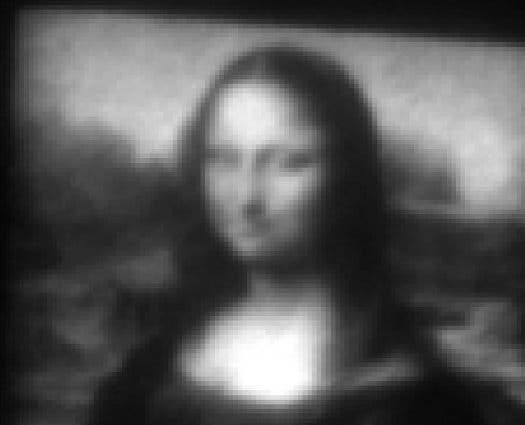Mona Lisa is probably the most well known picture in the world – it’s been painted thousands of times, inspired countless artists, and her enigmatic smile still puzzles researchers and artists alike; but never before has it been painted on such a small canvas.

Demonstrating a very potent nanotechnique, researchers have made a miniature Mona Lisa that stretches 30 microns across – about a third of the width of a human hair. The team from Georgia Tech created the molecular masterpiece using an atomic force microscope and a process which they have called ThermoChemical NanoLithography, or TCNL for short.
Thermochemical nanolithography (TCNL) employs heated nano-size tips to create heat which activates chemical reactions to change the functionality of a nanoscale surface or obtain new nanostructures. It’s not a novel technique, being used for the first time in 2007, also at Georgia Tech.
The pixels of the “Mini Lisa” each measure 125-nanometer , and they are basically a confined set of chemical reactions. By controlling the amount of heat which goes into the molecules, researchers influenced the shade of grey of every ‘pixel’ – making this extremely small work of art a brilliant demonstration of TCNL’s ability to make variations in molecular concentrations on this extremely small scale. This has the potential to be applied in nanoscale manufacturing.
“We envision TCNL will be capable of patterning gradients of other physical or chemical properties, such as conductivity of graphene,” study researcher Jennifer Curtis said in a statement. “This technique should enable a wide range of previously inaccessible experiments and applications in fields as diverse as nanoelectronics, optoelectronics and bioengineering.”
This is not the first time the Mona Lisa has been used in science – earlier this year, NASA beamed the famous image to the Moon, using a very powerful laser.
The findings were detailed in the Journal Langmuir.






